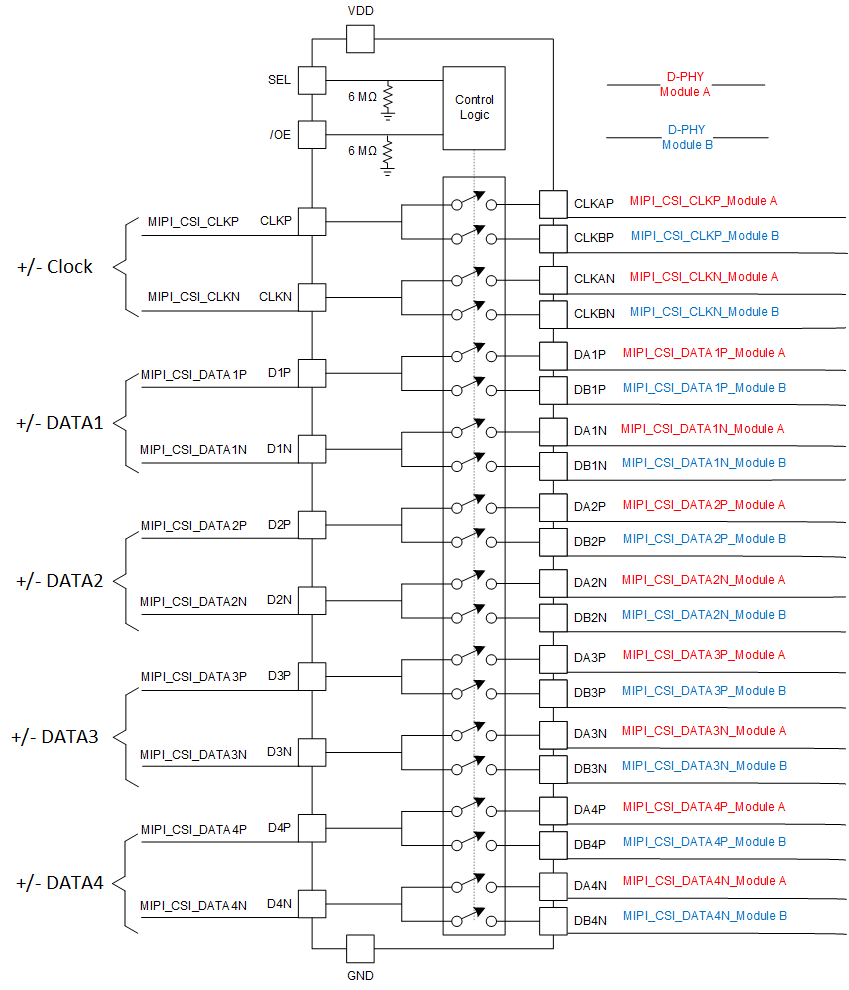JAJSM45 June 2021 TMUX646
PRODUCTION DATA
- 1 特長
- 2 アプリケーション
- 3 概要
- 4 Revision History
- 5 Pin Configuration and Functions
- 6 Specifications
- 7 Parameter Measurement Information
- 8 Detailed Description
- 9 Application and Implementation
- 10Power Supply Recommendations
- 11Layout
- 12Device and Documentation Support
- 13Mechanical, Packaging, and Orderable Information
9.2.2.1 MIPI D-PHY Application
The clock and data lanes can be interchanged as necessary to facilitate the best layout possible for the application. In addition, the signal lines of the TMUX646 are routed single ended on the chip die. This makes the device suitable for differential and single-ended high-speed systems. This also allows the positive and negative lines to be interchanged as necessary to facilitate the best layout possible for the application.
D-PHY application includes a differential clock and 4 differential data lanes. All the channels of the device perform similar and the clock or data signals can be interchanged as necessary to facilitate the best layout possible for the application.
 Figure 9-3 MIPI D-PHY Example
Pinout
Figure 9-3 MIPI D-PHY Example
Pinout